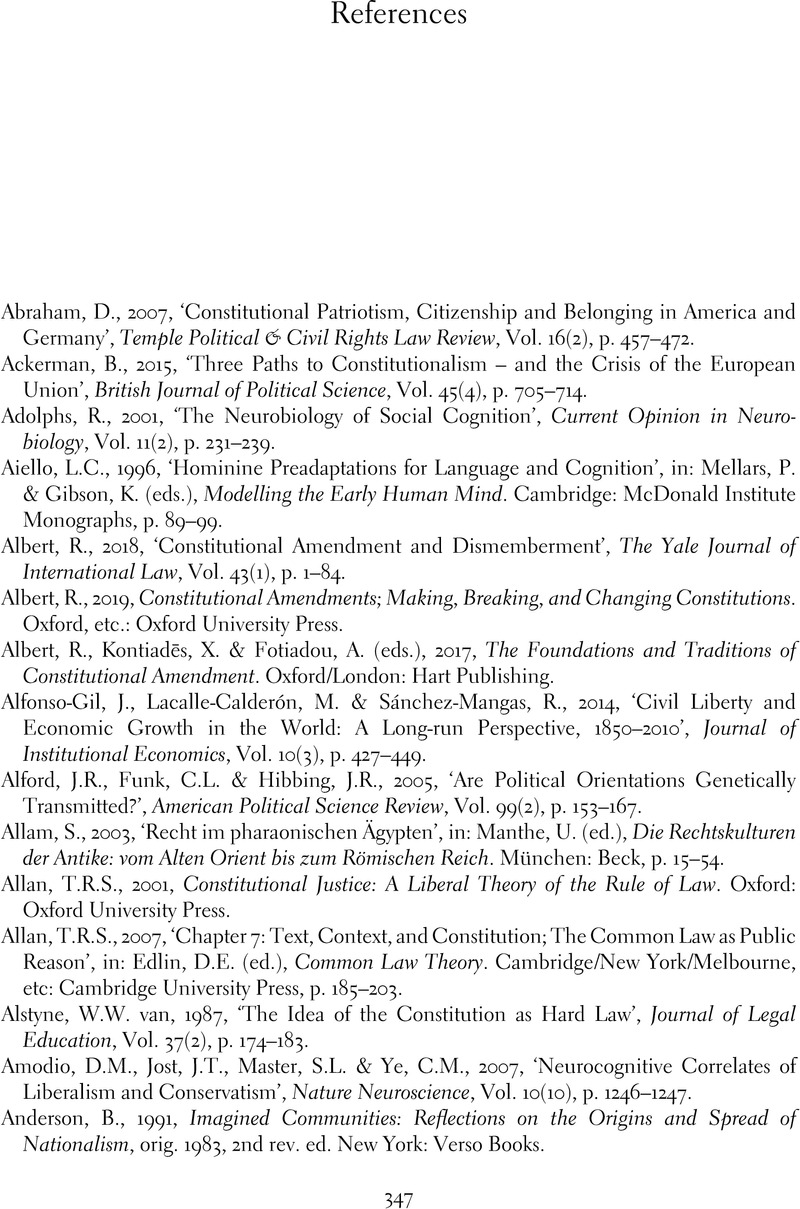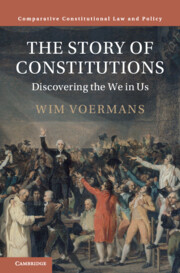Book contents
- The Story of Constitutions
- Comparative Constitutional Law and Policy
- The Story of Constitutions
- Copyright page
- Dedication
- Epigraph
- Contents
- Figures
- Prologue
- 1 Introduction
- Part I Constitutional Diffusion
- Part II The History of the Constitution
- Part III Concepts, Shapes and Types of Constitutions
- Part IV Effects
- Part V The Imagined Order of the Constitution
- References
- Name & Author Index
- Subject Index
- References
References
Published online by Cambridge University Press: 19 October 2023
- The Story of Constitutions
- Comparative Constitutional Law and Policy
- The Story of Constitutions
- Copyright page
- Dedication
- Epigraph
- Contents
- Figures
- Prologue
- 1 Introduction
- Part I Constitutional Diffusion
- Part II The History of the Constitution
- Part III Concepts, Shapes and Types of Constitutions
- Part IV Effects
- Part V The Imagined Order of the Constitution
- References
- Name & Author Index
- Subject Index
- References
Summary

- Type
- Chapter
- Information
- The Story of ConstitutionsDiscovering the We in Us, pp. 347 - 374Publisher: Cambridge University PressPrint publication year: 2023

